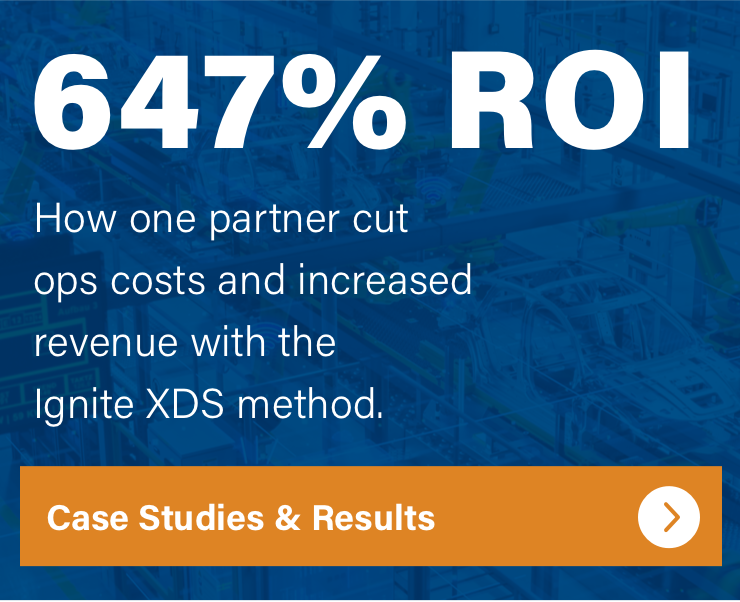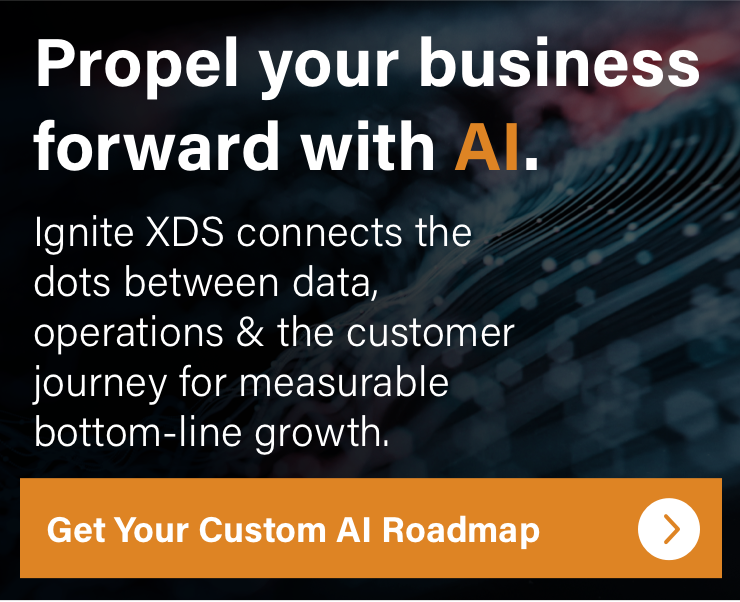
The Importance of the Customer Journey
In today’s world, the customer journey has become more complicated than ever. Customers interact with brands across countless devices, channels, and touch points, oftentimes in a hidden buying cycle, making it vital for businesses to adopt an all-encompassing customer-centric approach to sales and marketing in order to thrive.
We’re here to explore the intricate customer journey and its impact on sales and marketing. We will summarize each stage of the customer journey and key factors that influence each, offering strategies to enhance customer engagement, conversion rates, and retention.
Whether a budding start-up or well-established enterprise, understanding the value of the customer journey will equip you with valuable insights and practical tips that you can use to build a pleasing customer journey that will foster unbridled growth for your business. Get ready to take the reins of your customer’s journey with our enlightening white paper.
What is The Customer Journey?
The customer journey is a multi-faceted experience that customers go through when they identify the need for a product/service and then set out to fulfill that need. It includes their experience and engagement with your brand or product and covers all facets of the customer lifecycle, from the first hint of brand awareness to the final stages of purchase and post-purchase support, as well as retention. The customer journey is a dynamic process that is far from linear, and it can be significantly influenced by direct actions from your brand, as well as factors such as customer preferences, competitor activity, and market trends.
Understanding the Customer Journey
In order to craft a winning sales and marketing strategy, it is imperative to grasp the value of the customer journey and the various elements that impact it. This means delving deep into customer behavior, preferences, and struggles throughout every phase of the journey, as well as recognizing chances to enhance and optimize the experience.
A. Customer Behavior and Preferences
To truly perfect the experience of your customers, it’s crucial to have a deep understanding of their behavior and preferences. Extensive data collection can reveal insights into the customer’s needs and how well your brand is serving that need, or whether opportunity is lost to competition. This can include quantitative data such as analytics on search trends and performance, ad or website analytics, etc., as well as rich data via customer feedback, reviews, or customer support interactions.
B. Pain Points and Opportunities
To enact true change that will impact your company’s goals, it is imperative to recognize customer pain points and opportunities for improvement throughout the decision-making process. It is at these points that you may be losing potential customers or existing customers to your competition. You cannot out-market a poor experience. This involves actively listening to customer feedback, conducting thorough surveys and interviews, and carefully analyzing customer support tickets and reviews. By being proactive and implementing necessary changes to improve the customer experience, your brand can reap the rewards of reducing lost opportunities, increased customer loyalty, and higher retention rates.
C. Mapping the Customer Journey
Visually defining the specific touch points where your customers interact throughout their journey is a game-changer for your business. By doing so, you can see at a glance the steps they are taking to consider a product/service, research, buy, and buy again. It can reveal where your brand must be present and opportunities to optimize and/or personalize sales and marketing messages, to ultimately guarantee a seamless experience for your customers. Below we will dive into the stages of the Customer Journey but be sure to check out our white paper on How to Create a Customer Journey Map here.
The Stages of the Customer Journey
1. Awareness
The first step in the customer journey is always awareness: the customer becomes aware of a need or want and begins the search for a solution. Your goal is to make potential customers aware of your brand and create interest in the solutions you offer. This can be achieved through various marketing channels, such as social media, digital advertising, search engine marketing, or even word of mouth.
Some additional details and examples for this stage include:
• According to a survey, 70% of consumers become aware of new brands or products through social media advertising. Running targeted ads on platforms like Facebook or Instagram can help you generate brand awareness and reach a wider audience.
• Search engine marketing can be effective when consumers have already identified a need and begin their search for a solution. By implementing a paid advertising strategy, such as Google Ads, you can ensure your brand appears at the top of search engine results.
• Customer surveys or polls can be used to help identify how your customers initially became aware of your brand. Note: it may be different for each customer segment or persona.
2. Consideration
In the consideration stage, prospective customers delve deeper into your offering by conducting research. This may entail exploring your website/content, analyzing customer reviews, or comparing your products or services to those of your rivals. Research shows that 81% of shoppers conduct online research before making a purchase. Here are some ways your business can be more aware of how consumers are ranking and considering you:
• What type of information are consumers searching for to help make their purchase decision? Is your brand supplying answers? Providing clear and detailed product descriptions and information, customer testimonials, demos, etc. can establish your brand as the superior choice. If the consumer has to find answers elsewhere, they may not return.
• Reviews: Prospective customers often rely on reviews and ratings to gauge the quality and reliability of your products or services. Encourage satisfied customers to leave reviews and manage any negative feedback promptly and professionally.
• Competitive analysis: Potential customers may compare your offerings with those of your competitors. Highlighting unique selling points, differentiating factors, and providing detailed product comparisons can reinforce why your brand is best.
3. Decision
The crucial decision making stage is where we have the opportunity to close the sale. Sales strategies such as limited period promotions or cost-free trials can be effective in persuading the customer to take action and buy, but their entire experience at this stage is just as important. To earn the customer, consider:
• Limited period promotions or personalized offers: Offering time-limited discounts, exclusive offers, or special deals can create a sense of urgency and incentivize potential customers to make a purchase. For example, if a customer is on the verge of purchasing, presenting a limited time offer of free product accessories if they make the purchase within the next 24 hours, can encourage them to take action.
• Cost-free trials: Providing free trials of your service allows potential customers to experience your product firsthand, reducing the perceived risk and increasing the likelihood of conversion and retention.
• The consumer’s physical experience with your brand can make or break the deal. Customer assistance, the shopping cart experience, and even tailored recommendations can help guarantee the sale. Performing a blind shop can provide insight into the customer experience and areas for improvement.
4. Retention
The key to retaining customers is to keep them engaged and satisfied long after they’ve made a purchase. Building long-term relationships and fostering customer loyalty are key objectives during this stage. Did you know that acquiring a new customer can be up to 5 times more expensive than retaining an existing one?! It’s crucial to keep your existing customers happy, and these tactics will help you do just that:
• Product excellence: Above all, your product or service must deliver on the promises you made. A lackluster experience will only discourage repeat purchases. Providing valuable resources such as educational content, product tutorials, or FAQs, can help customers maximize the benefits of their purchase and strengthen their connection with your brand.
• Follow-up & personalized communication: Sending informative follow-up emails, personalized messages, and helpful long-term content to customers after their purchase can show appreciation and offer assistance if needed. It also provides an opportunity to gather feedback and address any concerns.
• Loyalty rewards: Implementing a loyalty program with rewards, discounts, or exclusive perks for repeat customers can incentivize them to continue choosing your brand over competitors.
5. Advocacy
The advocacy stage goes beyond retention and is when your brand’s satisfied customers transform into enthusiastic advocates, spreading the word by delivering glowing reviews and referrals, helping you to attract additional new customers. 92% of consumers trust recommendations from friends and family over traditional advertising. Therefore, cultivating brand advocates can significantly impact your brand’s reach and reputation. Strategies for this stage can include:
• Referral programs: Encouraging existing customers to refer friends or family members to your business by offering incentives, such as discounts or rewards.
• User-generated content: Incentivizing customers to create and share their own content related to your brand, such as testimonials, social media posts, or product reviews, can amplify your reach and establish social credit. For example, if a satisfied customer shares their positive experience with a product on social media by tagging the brand and recommending it to their followers, their social circle will be more likely to consider the brand and product, expanding your reach.
Strategies for Optimizing the Customer Journey
A. Buyer personas
Buyer personas are the ultimate tool to personalize your sales and marketing tactics to the unique preferences and needs of your ideal customer. These fictional representations are based on extensive research and data, giving you unparalleled insights into your audience’s psyche.
Gain a crystal-clear understanding of your target audience’s demographics, interests, pain points, and buying behaviors. Then you can utilize your buyer personas to tailor your marketing messages, product offerings, and customer experience to ensure they resonate with respective customer segments. By segmenting your audience based on buyer personas, you can deliver more relevant and personalized experiences that will boost customer satisfaction and loyalty.
For instance, imagine a big city travel agency identifying a core segment of their customer base represented as buyer persona: “Adventure-Seeker Alex,” a young, thrill-seeking traveler, along with other preferences and behaviors. By designing adventure-focused travel packages and crafting targeted content and marketing campaigns, they attract Alex and other similar customers. The power of buyer personas unlocks precise insights into your customer segments and helps you deliver tailored experiences that drive business growth. Need help getting started with your buyer personas to revolutionize your sales and marketing approaches? Check out our resource on buyer personas here!
B. Content marketing
Content marketing is a powerful tool for any business looking to establish credibility, foster trust, and influence purchasing decisions. By creating valuable, educational, and entertaining content, you can attract and engage your target audience, position yourself as an industry expert, and build lasting relationships with potential customers.
Consider the example of a software company that creates in-depth user guides, case studies, and video tutorials to address common challenges faced by their customers. By consistently producing high-quality content, they can nurture leads, educate customers, and drive sales. And with research showing that companies with blogs see 55% more website visitors and 434% more indexed pages, it’s clear that content marketing is a game-changer when it comes to brand visibility and ultimately lead generation.
Deliver exceptional value, relevance, and consistency in your content to establish yourself as a trusted authority in your industry. This will elevate brand awareness and steer potential customers towards the ultimate decision in their customer journey.
C. User experience
The ultimate user experience extends beyond mere functionality and encompasses every aspect of a client’s interaction with your brand. From website design and usability to personalized customer support, a truly exceptional user experience can fuel customer satisfaction, loyalty, and advocacy.
To deliver a flawless customer journey experience, it is imperative to ensure a seamless and uniform experience throughout all touch points. This can be accomplished by maintaining consistency in branding, messaging, and design, and optimizing every interaction for maximum user delight.
Don’t just take our word for it; research shows that superior user experiences can boost customer satisfaction by up to 30% and drive revenue growth by up to 15%. Never underestimate the power of a remarkable user experience in driving success and customer satisfaction!
D. Social proof
Utilizing the concept of social proof can be an absolute game-changer when it comes to establishing trust and credibility with potential customers. This principle revolves around the simple fact that people are highly influenced by the actions and opinions of their peers.
Social proof is a critical psychological phenomenon that impacts decision-making. To build credibility and trust for your brand, it’s important to earn and display positive reviews, testimonials, and social media mentions. Influencer endorsements, user-generated content, and case studies are also highly effective forms of social proof.
Research has found that displaying reviews can increase conversion rates by up to a whopping 270%! Take a cue from successful online marketplaces that showcase customer reviews and ratings on product pages to help potential buyers make informed decisions based on the experiences of others. With the power of social proof behind you, you can showcase the quality of your products or services, improve conversions and advocacy, and take your business to new heights of success!
E. Personalization
Invigorate your sales and marketing game by customizing messaging to meet your target audience’s unique requirements and preferences. Remember, personalization is paramount to perfecting the customer journey. By tailoring your messages, product offerings, and customer experiences to individual customer segments and preferences, you can increase cross-selling and upselling opportunities.
Email segmentation is a great example of a strategy that can enhance engagement by sending targeted messages to specific customer segments. For instance, a successful online retailer that sends personalized emails based on past purchases, product preferences, and browsing activity will see higher click-through rates and conversions.
So, leverage techniques like personalized product recommendations, email segmentation, targeted ad audiences, and retargeting to leave a lasting impression on your customers!
F. Measurement and Analytics
To best understand customer behavior and the impact of your sales and marketing activities, it is imperative to always measure and track relevant KPIs. This means rigorously reviewing crucial metrics such as ad performance, website analytics, leads, conversion rates, customer retention, and more throughout the customer journey.
A data-driven approach is the only way to inform continuous optimization and improvement of marketing strategies. According to Google, companies embracing data-driven marketing are up to three times more likely to increase their revenue and twice as likely to see a higher return on investment.
Such unwavering diligence is vital in gaining invaluable insights into the effectiveness of your strategies, enabling you to flawlessly fine-tune your tactics for optimal results. Use the power of these insights to identify and improve areas that require attention, and nothing will stand in the way of your brand’s success!
G. Continuously Improve and Adapt Your Strategy
The customer journey is not a one-time event, but an ongoing experience that requires continuous improvement and adaptation. By keeping a pulse on customer feedback, metrics, and opportunities for advancement via new tactics and strategies, you can continuously optimize and improve your customer journey.
As your organization evolves, don’t just wait for customer feedback, actively seek it out to identify pain points and areas for improvement in the customer journey. Take a cue from successful companies that regularly conduct user surveys, gather feedback, and stay ahead of market trends to drive innovation and enhance their product and customer journey.
What Does it All Mean?
The customer journey is undeniably the backbone of any successful sales and marketing strategy. It’s crucial to comprehend the various stages involved, analyze the influencing factors, and work on optimizing it to perfection. This is the bedrock of attracting, converting, and retaining customers with remarkable efficacy. With an unwavering focus on the customer and a constant desire to polish and refine your approach, your business can easily create a customer journey that’s both smooth and pleasurable, leading to the growth and success you desire.
If you want to know how to create a practical Customer Journey Map, visit our white paper on How to Build a Customer Journey Map.
If you’re feeling overwhelmed or unsure how to begin, our team of experts is just a call away. We are delighted to assist and help you get started, so you can harness the power of your customer’s journey to build a strategy to achieve exceptional company growth.


